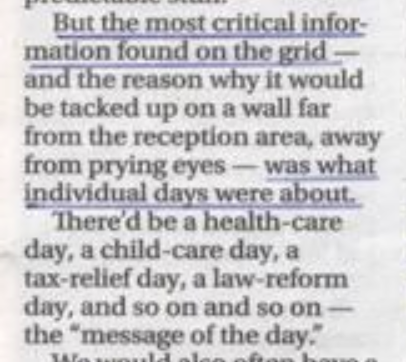Warren Kinsella is a former Liberal political operative, now a liberal political operative in Canada. Here’s a snip from his recent op-ed in the Ottawa Sun (underlining added by my correspondent):

What does this have to do with Proposal Land? Just this. Proposal geeks talk about storyboarding; executives talk about finding the “Wow!” factor. It sounds more impressive and more difficult than it is.
Your aim? A single sheet of paper (actual or virtual) that lists the message of each section.
Your method? Starting high – with the major sections that will/would be tabbed in the hard-copy submission and moving to sub-sections as time allows – do these four things:
#1 – Identify two messages for each section:
- What benefit(s) will your solution deliver to the client?
- Why should the reader believe you? That is, what specific experience and accomplishments in similar work can you point to?
#2 – Turn it into clear, non-jargony, non-fluffy English.
#3 – Tell writers to incorporate these plain-language messages in their sections.
#4 – Ask reviewers what message they received. If they didn’t receive what you intended to transmit, fix that.

I have no quibbles about your specific recommendations. I do wonder if electioneering is a Request for Proposal, or a Freelance Submission. If the latter, the format might be more like
1. Identify the need/vacuum/audience
2. Show how your proposed article/plan can fill that need
3. Show why you — and not someone else — are the best person to produce that article/plan/whatever
ISTM that most election campaigns start with point 3 and work backwards
Jim T
Jim – I’d say your points apply to both prompted and unprompted proposals. In our thinking as in our writing/speechifying, we should always start with the client’s/user’s/voter’s need, not our own wonderfulness. But you can see how tempting it is to start with me me me.